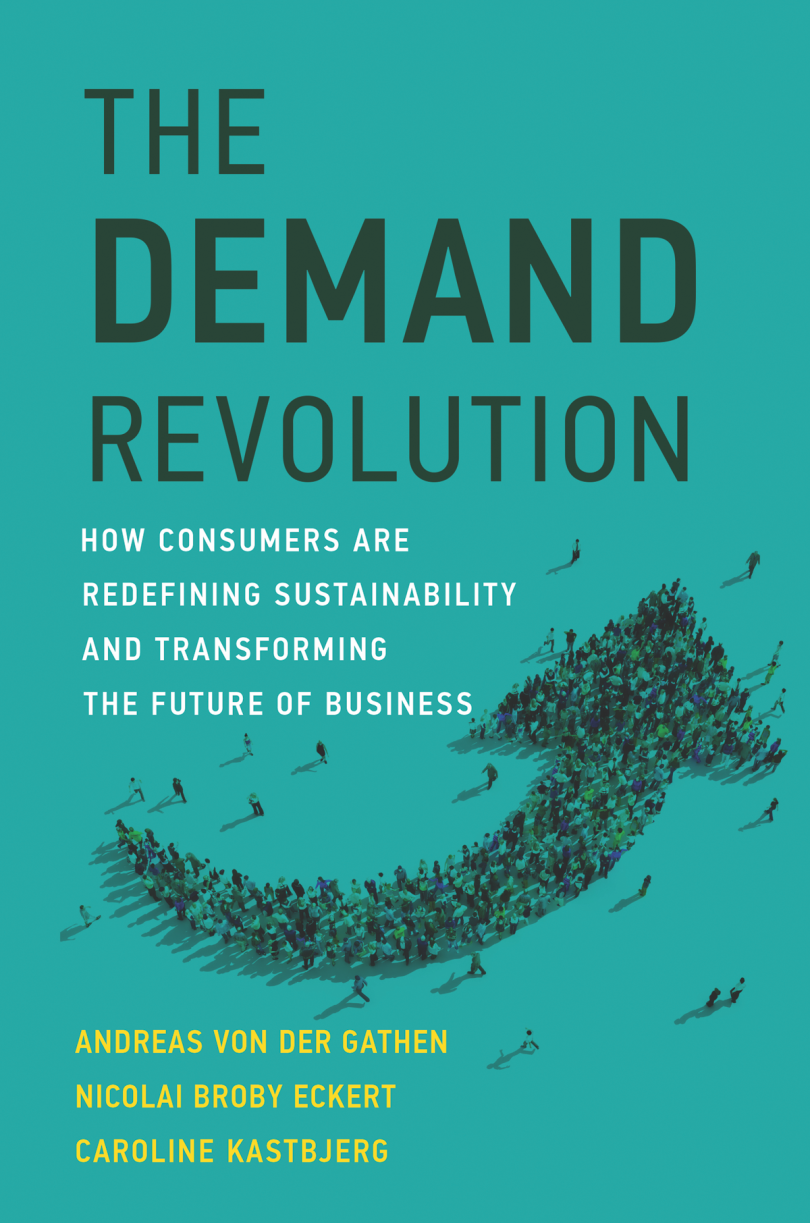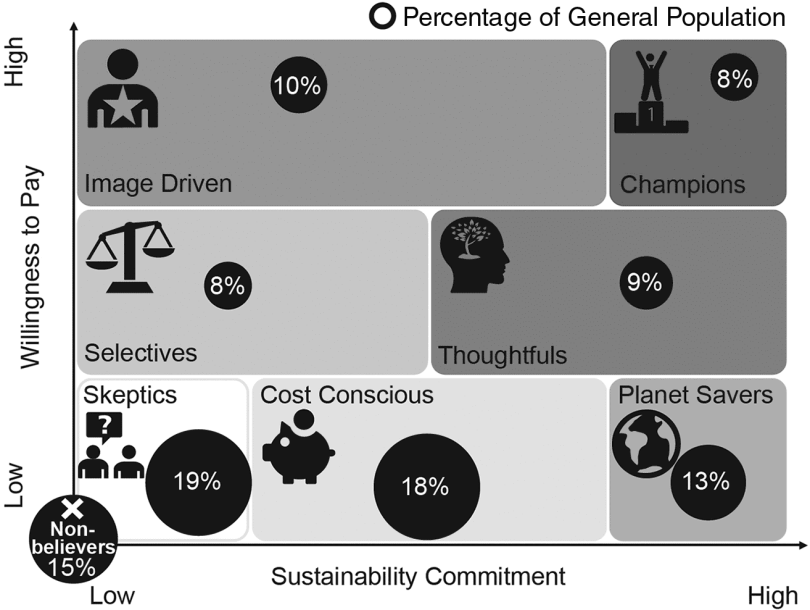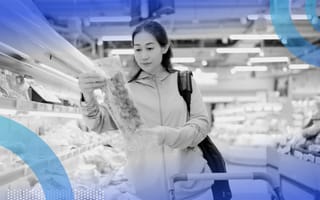Sustainability now holds a powerful position in the minds of the consumers. Their heightened awareness around sustainability has changed their day-to-day behavior, including how they make their buying decisions.
Price, quality and brand are product attributes that historically are known for affecting the perceived attractiveness of any solution in the eyes of consumers. The relative importance of these universal value drivers depends on the consumer and on the product or service they are buying.
Consumers are driving the sustainability megatrend forward by changing what they consume, how they consume and how they lead their day-to-day lives. We expect that the pace of these changes will continue to be measured in years, not decades.
Who Are the 8 Consumer Archetypes?
- Image driven.
- Champions.
- Selectives.
- Thoughtfuls.
- Skeptics.
- Cost conscious.
- Planet savers.
- Non-believers.
We now also see sustainability becoming an increasingly important value driver and purchasing criterion for consumers across more and more product categories
What Prevents Consumers From Buying Sustainably?
In the core study we conducted in 2022, a total of 71 percent of respondents in North America and Europe said they have made modest or significant changes toward buying more environmentally sustainable products over the past five years.
Some 56 percent of the consumers said environmental sustainability is more important today compared to last year when they make daily purchasing decisions. However, what is holding back the consumers from accelerating their commitment to making sustainable purchasing decisions is the existence of a set of barriers imposed and perpetuated by many companies.
The most frequently cited barriers to buying sustainable goods and services are affordability (34 percent), accessibility (23 percent), knowledge (22 percent) and trust (16 percent).
Dissolving these barriers is the key for companies that want to unlock the commercial opportunities — growth, profit, consumer loyalty and advocacy — that can come from bringing sustainable solutions to market. In reducing or dissolving these barriers, companies will accelerate growth by making it easier for even the most frustrated and mistrustful consumers to lead more sustainable lives.
How Companies Can Earn Back Consumer Trust
There is no fixed sequence companies should follow to address these barriers. Some companies, for example, may not be able to address affordability in the short-term, neither through lowering their cost base nor through the commercial creativity that helps them implement different pricing structures and go-to-market strategies.
But they can still address other barriers to improve their relationships with consumers. Our research shows that these barriers are interrelated, which means that dissolving one can weaken or eliminate others. Shoring up the knowledge about a product with credible information — both in depth and breadth — can also enhance trust, simply by shifting the ratio of positive to negative or dubious claims in the brand’s favor.

Knowledge can also change consumers’ perceptions that they can’t afford a sustainable solution because credible and trustworthy information can enhance their perceived value for that solution.
Removing the barrier of affordability can get more products in consumers’ hands, which creates more positive user experiences and lays the groundwork for the loyalty and advocacy that consumers rely on when they seek out sustainable solutions. The greater volumes also increase efficiencies and economies of scale, which can lower production costs and allow the company to make solutions even more affordable and accessible.
The 8 Consumer Archetypes
The stereotypical “sustainable consumer” — with an intense passion for all things sustainable and a high willingness to pay for sustainable goods and services across all categories — makes up only a small portion of the world’s consumers.
Sustainability is now a present and influential factor in how most consumers make their lifestyle decisions and their purchase decisions. But the influence of sustainability on consumers is not uniform, neither in its intensity nor in its extent.
To understand these differences and make them actionable, we segmented consumers in North America and Europe by performing a cluster analysis based on two dimensions, using data from our two core studies:
- Their commitment to sustainability. Each consumer responded to a number of specific purchasing situations for 19 product categories. For each category — for example, apparel — they ranked the importance of value drivers from a list we provided. The number and type of value drivers depended on the category but always included price, quality, brand and environmental sustainability. The measure of an individual consumer’s commitment to sustainability is the number of times that consumer ranked environmental sustainability among their top-five buying criteria across the categories they rated.
- Their relative willingness to pay more. We asked each consumer if they would be willing to pay less, the same or more for a sustainable alternative within a certain product category. The measure of an individual’s willingness to pay more for sustainable solutions is the number of times they stated that they would be willing to pay more across product categories.
Figure 6.1 shows the results of that analysis for European and North American consumers. Consumers fall into eight distinct archetypes, each with its own value drivers, attitudes, motivators, barriers and information sources when it comes to purchasing sustainable goods and services.

The consumer behavior map shows the eight consumer archetypes based on their commitment to sustainability and their willingness to pay a premium. The map also shows the percentage of the general population that each archetype represents. Image created by author(s).
While the core studies provided the structure for the segmentation, the basic interpretations and richer descriptions of each archetype derive from how the consumers responded to all the general and industry-specific questions in the large-scale surveys.
Adapted from The Demand Revolution: How Consumers Are Redefining Sustainability and Transforming the Future of Business by Andreas von der Gathen, Nicolai Broby Eckert and Caroline Kastbjerg, published on October 8, 2024. Reproduced with permission from the MIT Press.





